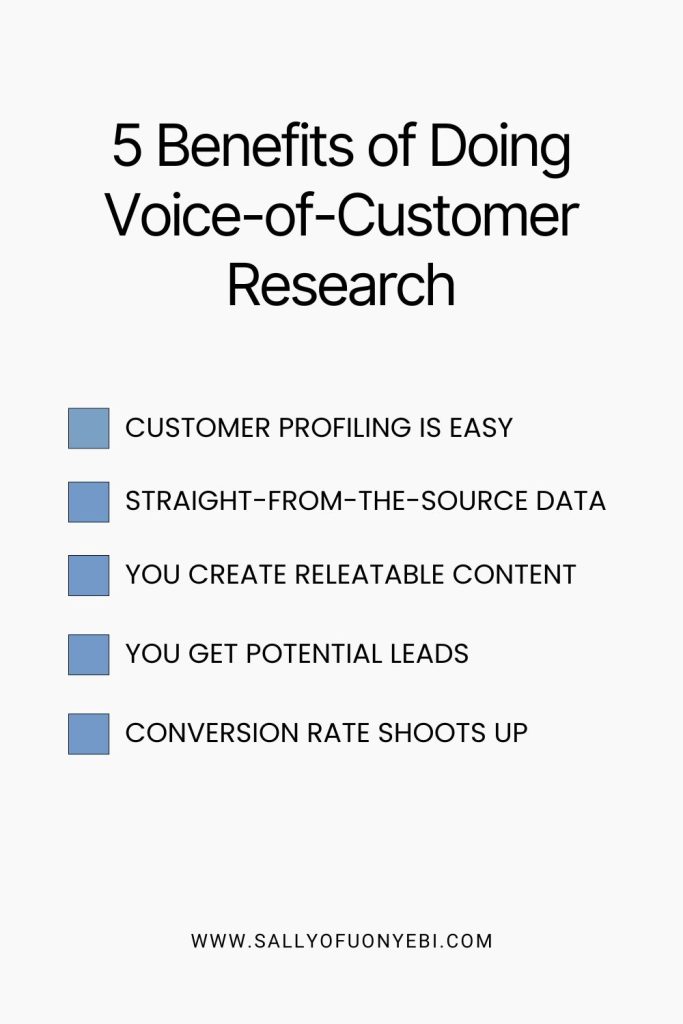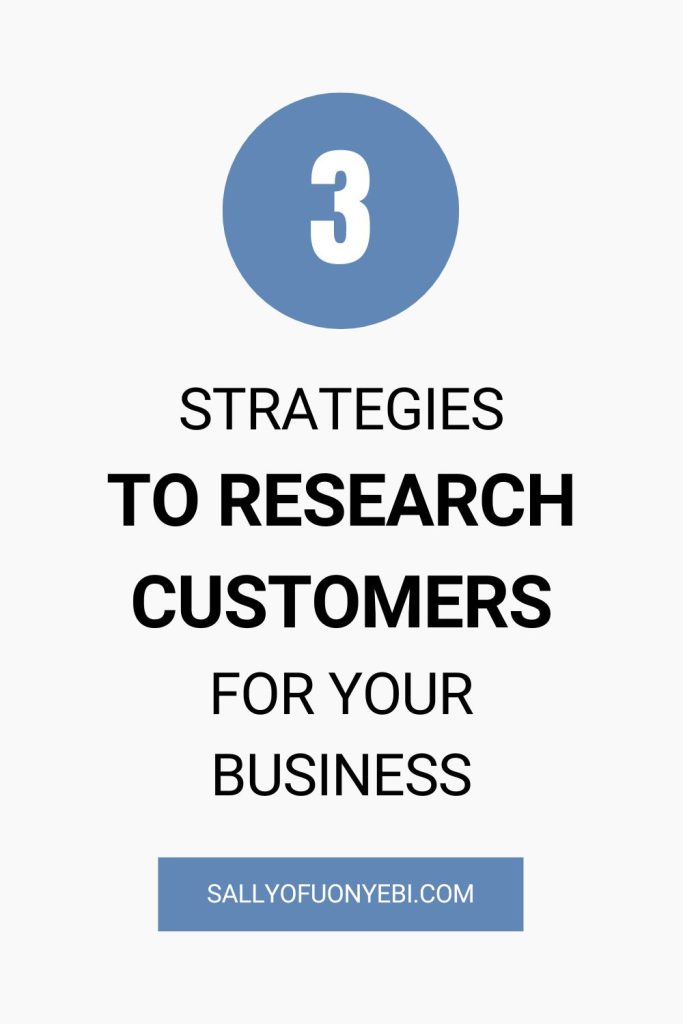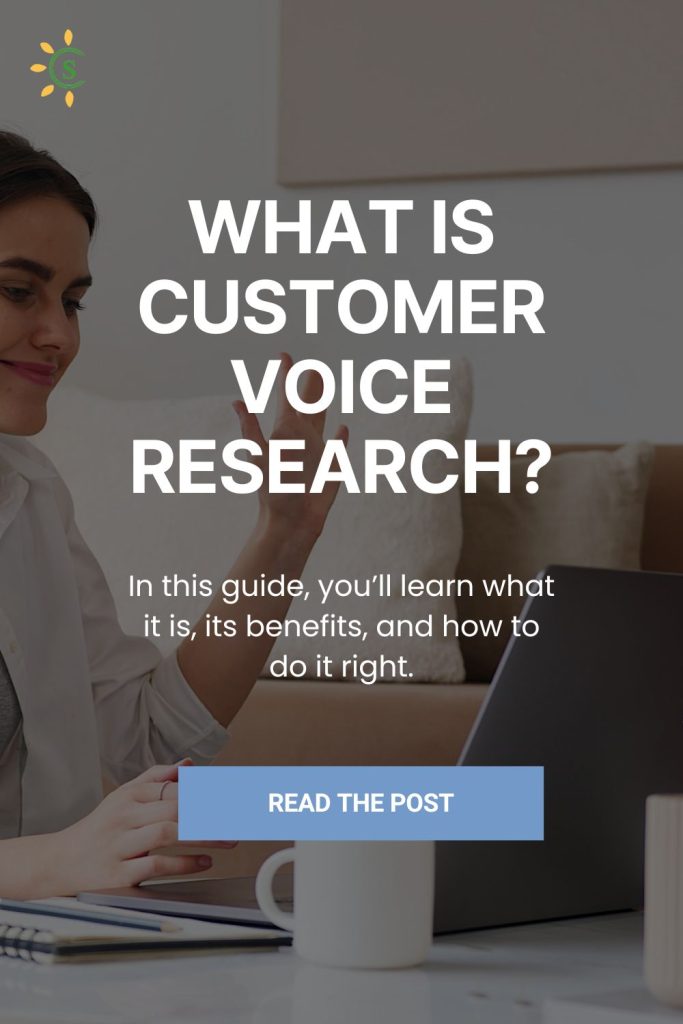How to Do Customer Voice Research

Picture this—You’ve got a landline, and every time it rings, it’s your ideal client about to spill the tea on what’s going on with them.
That means you won’t just be creating content you “think” they want. You’ll create content they actually want—courtesy of the top-secret information they share with you.
Isn’t that a fast way to build a talk-of-town love story between your brand and them?
Like… Isn’t that every business owner’s dream?
Your audience hanging with you… Their eyes lighting up every time they see your post… Their excitement to sign up for your paid offers soaring through the roof. All because you totally get them…
Isn’t that it?
This process of uncovering what your ideal clients want is called customer voice research.
In this guide, you’ll learn exactly how this works.
Table of Contents:
What is customer voice research?
Customer voice research, also called voice-of-customer (VoC) research, is a process of making thorough findings by asking deep questions and collecting feedback from people who are best-fit customers of your business.
This type of research helps you learn everything about your ideal clients—their profiles, interests, needs, challenges, and desires—so you can better connect with them.
As a conversion copywriter, VoC research is a must-do part of any copywriting project I take on—whether it’s a website project, a sales funnel, or a content subscription—because that is where the insights are.
And you should do the same for your sales copy and content, if you’re serious about conversions.
What customer voice research is NOT
Contrary to popular opinion, customer voice research is not:
- Market research
- Just “research with your existing or past customers.”
Let me explain.
CVR is not market research
Market research is important because it shows you how viable your idea/offer is.
And by viable, I mean “sellable.”
Market research focuses on helping you:
- Figure out if there’s an existing market, that is, the total addressable market (TAM), for the offer you want to release
- Evaluate your position and strength against the competition
- Identify likely content gaps and opportunities you can leverage.
Voice-of-customer research, on the other hand, allows you to get straight-from-the-client insights on what they want. Because, sometimes, what you think is helpful (offer- and content-wise) for your ideal clients may not be what they’re interested in.
Your ideal clients might not know if they will be interested in a particular solution, but they’ll always be interested in achieving their dreams.
This research is your answer to creating content and offers that support their dreams.
It gives you a direct passage into their thoughts and desires, so you can:
- Profile your target customers
- Acquire relevant information straight out of their mouths
- Create bingeworthy content they won’t be able to resist
- Get potential, qualified leads
- Make more sales and revenue.
CVR is not just research with past/existing clients
Customer voice research is relevant for both established and brand-new businesses.
Even if your business has never had any clients before, you still need to ask your potential clients the questions that matter.
By doing this, you can create content and offers that align with their needs and desires. This will position you as someone who understands them. Someone they can trust.
This will eventually make you their go-to option.
In the Ideal Client Handbook, you’ll learn exactly how to extract top-secret insights from your dream clients and design your perfect ideal client avatar.
Why do voice-of-customer research?
When you can extract and use voice-of-customer research insights in all the areas that matter, you can keep leads coming in.
Here are five reasons why your business should never do without voice-of-customer research.
1. You can easily do customer profiling
Knowing your ideal client goes beyond simply naming them “Felicia.”
You should be able to profile them—you know, like a Tinder profile, but for business. And for this, you’ll need more than demographics.
Yes, their gender, age range, income size, and location are necessary, but you need more.
You need to know their psychographics.
- What makes them “tick?”
- What makes them who they are?
I’m talking about their quirks, interests, personalities, and behaviors.
(You’ll find prompts and a story framework to help you develop your ideal client in this workbook.)
And VoC research gives you direct access to all this information. By the end of your research, you’ll be able to profile your IC because you know exactly who they are.
2. You get ideal clients’ data straight from their mouth
This time, you’re skipping the middlemen—aka audience research tools like Think With Google, Sparktoro, or SpyFu—and going straight to get the lowdown on your ideal clients’ wishlists straight from their lips.
Because the realest, most comprehensive research you’ll ever do about your ICA is the one that comes straight from their thoughts. ~Unfiltered~
A VoC research interview allows you to get facts. To cut through the noise and assumptions to find out your ideal client’s preferences, pain points, and dreams.
Even more, it gives you a full view of their idea of the perfect solution. And this is a whole positioning strategy to get in their heads and become top of mind.
3. You create bingeworthy content
Imagine going on a first date with someone, and you don’t understand a single thing as they ramble on and on about how cool they are.
That will be a turn-off for you and certainly a thumbs-down for them.
Consider every single piece of content you put out as a date. One more step to getting your ideal clients to fall in love with your brand.
This would mean, now more than ever, that creating attention-grabbing “relatable” content is non-negotiable.
You don’t want to ramble on and lose their interest.
The best place to get these content ideas is on a customer voice research call. You can identify connection points your brand can use to draw them in.
This way, you won’t be guessing, but creating content that draws them in.
4. You get access to potential leads
A VoC research call is a way to find qualified leads for your business without being pushy.
The most promising leads are often hidden in the nuances of customer conversations.
You can ask your interviewees if it’s okay to follow up with them if you have any recommendations for solutions that might be helpful.
However, this is after the entire interview, as you don’t want to come off as a salesman.
5. Your conversion rate shoots up significantly
One thing you need to keep in mind is that:
Your ICA wants to feel seen, heard, and understood.
If you can get in your ICA’s head through your website content, you’ll win their trust easily. If you can get into their feelings through messaging that speaks to their dreams and needs, they’ll fall head over heels in love with your brand.
They want someone who:
- Can relate to their circumstances
- Provides a safe space for them to be themselves
- Has a solution to help them overcome their frustrations
- Wants to help them become the person of their dreams.
Your website copy and overall brand message have to reflect these things.
With the insights you’ll gain from a VoC research call, you’ll have the insights you need to create content that drives conversions.
How to do customer voice research the right way
There are different forms of VoC research—survey forms, polls, question stickers, comment stalking, etc.
But the most effective way to hack your customer’s interests and voice is through a good ol’ one-on-one interview.
I created scripts, questionnaires, and how-tos to nail every stage of the customer voice research process in this guide.
Find your ideal client-fit
First things first: who are we talking to?
Start by analyzing your current customer base.
- What issues does your business solve best?
- Who’s getting the most value from your product or service?
Look at your current customer base and identify those who truly benefit from what you offer. These are the folks whose opinions will shape your business for the better.
Reach out to them
Now that you know who you’re after, it’s time to make your move.
But remember, this isn’t a cold call—it’s an invitation to a conversation. And, for the love of God, don’t just blast out a generic email! Get personal.
Here’s how to make your outreach irresistible:
- Personalize your message. Show you’ve done your homework about them or their company. Craft a message that shows you value their input.
- Throw in some compliments. A little flattery never hurts, but keep it genuine.
- Explain the ‘why’. Make it clear how their input will make a difference.
- Be flexible with timing. Your ideal clients are busy people. Give them options.
Interview them and collect insights
Make it a conversation, not an interrogation.
When you’re face-to-face (or screen-to-screen), listen more than you speak.
Ask open-ended questions that encourage detailed responses.
- What main challenge do they face?
- What pain points do they suffer from because of this challenge?
- How do their dream lives look?
Don’t be afraid to dig deeper into their motivations and pain points—sometimes the best insights come from follow-up questions—but make it a welcoming space for them to share their thoughts without restraint.
And listen to more than their words. Pay attention to their emotions—tone, hesitations, and enthusiasm. Sometimes what they don’t say is just as important as what they do.
After the interview, send a thank-you note and an invitation to follow up with helpful recommendations.
Start your customer research process right
Now that you know customer voice research is your golden ticket to understanding what makes your dream clients tick, it’s time to gather insights.
From the gist above, you’ve learned the steps involved in the process. By tapping into their thoughts, needs, and pain points, you can tailor your products or services to hit the bullseye every time.
If you want to find out exactly how to extract meaningful VoC research data, including scripts and research questionnaires to simplify the process, get the 2-in-1 Ideal Client Handbook.









